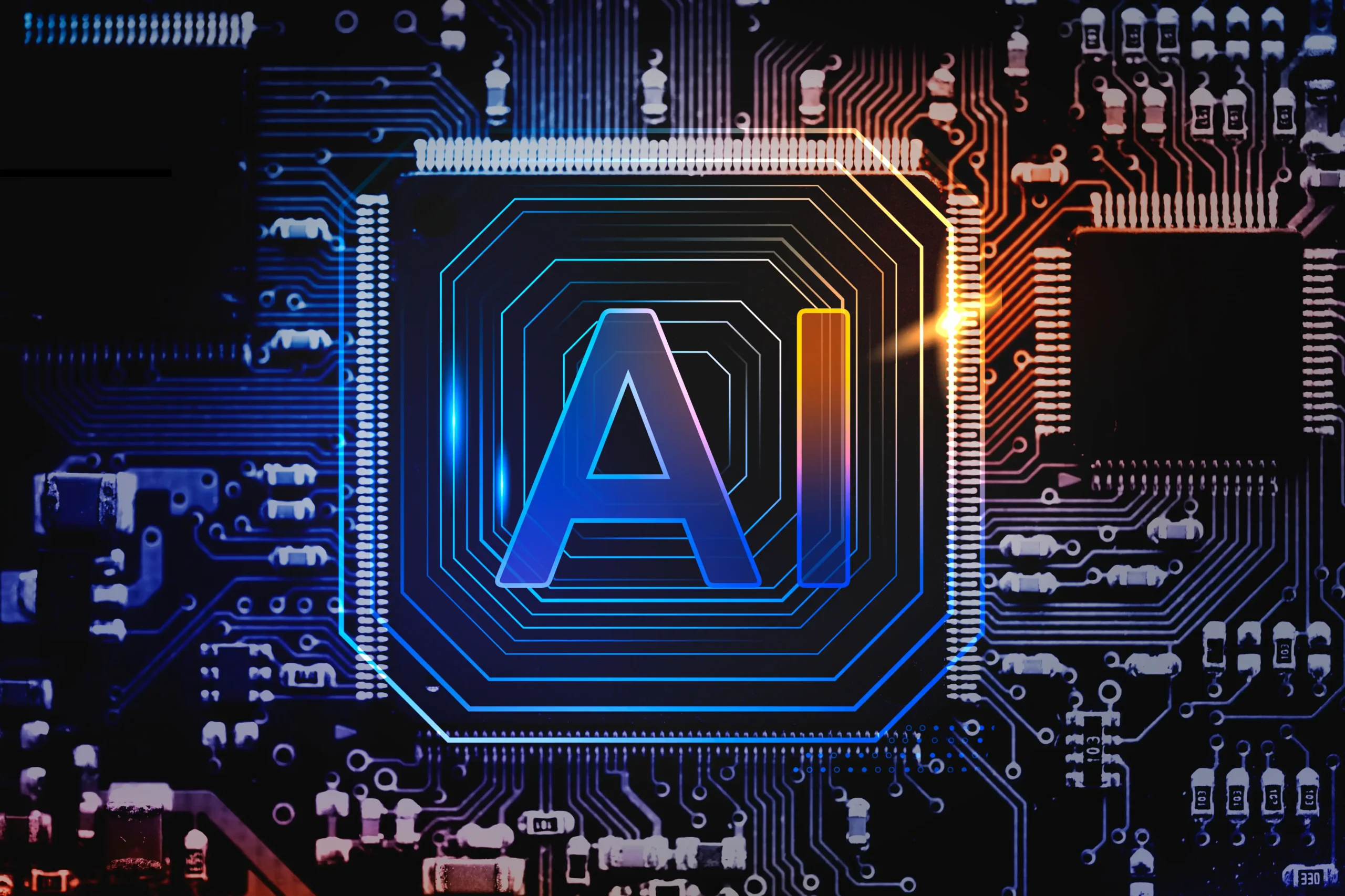Machine learning for all
Today AI is a household name working on the motto ” Think Simple”! Many organizations across a wide range of sectors use artificial intelligence and machine learning as a part of their business’s digital transformation. In particular, Mobile AI strives to make mobile technology; ingenious and more constructive for its users. Its expeditious development affirms that AI is a ground-breaking technology intended to rejig how people use technology and conduct business.
As a field of artificial intelligence, machine learning is revolutionizing more and more industries. Machine learning enables computers to discover insights like industrial process optimization, customer purchase behavior prediction, user personal interests, and much more by using algorithms that are constantly learning from data. The unique data management system uses near-real-time analytics to find anomalies, recognize normal behavior, compare sample data to previous data, and summarise empirical regularities. Due to their extraordinary accuracy, the predictions can function as intuitive action compasses without requiring human intervention. Hence, a mobile app can gain greater intelligence by relying on machine learning app development which automates its activities.

The popularity of machine learning in mobile apps can be attributed to several factors like,
- Advancement of using augmented and virtual reality for Gaming and Entertainment Apps.
- Advanced analytics and user assistance built-in Apps.
- ML approaches use sophisticated models for cognitive interfaces for things like emotion, voice, and facial recognition.
- Dependency on Cloud for improved storage and communication.
- Development of Enterprise applications to link effective teams.
- Wearable health and fitness devices for effective health control.
- Shopping and intuitive mobile commerce apps with tailored UX/UI.
- Cross-platform migration and fusing IoT devices and smartphones for multi-experiencing.
Machine learning apps have proven to boost corporate productivity and efficiency. See how, with an illustration- many companies now manage their chat service using chatbots. Chatbots are pre-programmed to interact with people and respond to frequently asked inquiries in real time. Thus, providing round-the-clock customer care with the aid of “ML apps,” or machine learning applications, increases customer service metrics generating repeat business.
According to Gartner, the future of app development will be multi-experience mobile apps with AI technology was what it predicted in 2020.
Just like a flash, in a recent survey of 2022, Gartner reported that 80% of executives believe automation can be used for any business decision and adapting to AI/ML for accelerated business growth, confirming the forecast.
Also, according to Gartner, better, quicker, and ethical decision-making are all necessary for the ongoing digital transformation, which is made possible by developments in decision intelligence and AI governance.
The aim to make machine learning accessible to a larger audience—the democratization of data science and machine learning (DSML), which lowers the entry barrier and is made possible by technological advancements in automation and augmentation—is one of the most important reasons why the IT sector is witnessing an increase in business adoption of machine learning, according to Gartner.
ML is the future of business, so why should you choose it?
The fundamental tenet of machine learning is that computers learn by receiving data and applying it to new situations. Machine learning is the most popular AI-powered commercial solution available today (ML). Machine learning systems successfully perform tasks like facial and speech recognition, object identification, translation, and chatbots, by using information from vast amounts of data. ML learns to recognize patterns on its own to predict what will happen next, contrary to hand-coded computers that require specific instructions to do tasks.
The primary purpose of machine learning is to optimize mobile app usage.
So why opt for ML in your business? Here are the top reasons.
1. Personalized :Users seek out applications that are straightforward and convenient. Machine learning-based software has the potential to become your pal by predicting your requirements and eventually giving you assisted information.
2. Less time-consuming search: These days, people lookout for pertinent information and find ML technologies worthwhile. The ML technologies quickly provide for spelling correction, voice search, and a list of relevant queries while also analyzing search history and typical activities with perfectly synchronizing the data.
3. Customers value well-designed e-commerce apps: This kind of application, fortunately, lends itself well to machine learning. A user is also more likely to find relevant content if statistics on click-through and sell-through rates, search histories, and purchase behaviors are available. Briefly said, the ML algorithm will predict search phrases swiftly. The best products, deals, channels, and sending times can all be recommended based on the search records of the customer.

4. Last but not least, the most prominent edge of ML for your company is-the more insight that you will gain about your customers’ expectations through the more data types you analyze. When you have user data available, there is a far higher chance that machine learning will work in your favor.
Addressing the contemporary world, programmers have developed ML algorithms for intended use and performance that perfectly handle user inputs. These algorithms are programmed where the relevant data is collected, organized, and preserved in the systems improving the standard of inference from data.
Given the exponential growth in AI and machine learning applications, the value of the back-end data is significant. Although many apps still employ a fixed algorithm and do not modify based on the data gathered, this will soon change. Users, as you know, prefer uncomplicated and intuitive solutions to suit their needs. Thankfully, the creation of ML apps enables apps to retrieve predictions without needing to run particular prediction generation code. Thereby, businesses are not only gaining new opportunities; but they can also respond to customer inquiries via mobile devices considerably more quickly. Due to the ability of ML algorithms and their advancements to customize apps, market leaders are embracing ML in their products.
Here we provide a concrete example of ML’s best application.
Tesla
Self-Driving cars are no longer just a pipe dream!
Tesla’s self-driving initiatives, led by Karpathy during a talk at CVPR 2021 Workshop on Autonomous Driving (https://cvpr2021.wad.vision/), described Tesla’s strategy for creating deep learning systems that just needed video input to comprehend the surrounding of the car and no longer requires complementary gear.
Additionally, it was mentioned that Tesla is already taking steps to use supercomputers to augment its deep learning models.
Eureka! Tesla achieved the best AI training performance with Dojo, allowing for larger and more complicated neural net models that are more power-efficient and cost-effective computing.
The sole objective of the Dojo D1 chip is to train machine learning models. Its distinctive design offers CPU-level flexibility, GPU-level computing, and twice as much network chip-level I/O bandwidth. It creates scalable control loops and monitoring software, uses cutting-edge technology for high-power supply and cooling, and takes on challenging problems. It works with every aspect of system design to produce the next generation of machine learning computing for use in Tesla datacenters, utilizing the comprehensive knowledge of the mechanical, thermal, and electrical engineering teams.
Tesla autopilot also has radar and ultrasonic sensors in addition to the cameras that detect and measure the distance between vehicles and other objects offering maximum drivers’ safety. To perceive the surroundings around the car and to make these autopilot capabilities as responsive as potential, neural networks are integrated with the Tesla hardware along with massive amounts of data that are processed in real-time by the AI in Tesla vehicles. The ResNet-50 shared backbone, which can process 1000 x 1000 images at once, serves as the platform for the Computer Vision workflow, which runs all of these jobs. Hydranet is a name given to this shared neural network backbone.

Tesla’s Dojo exemplifies elevating innovation to an even higher degree- inferring that investing in AI/ML could offer your company a host of benefits, including the ability to analyze the behavior patterns of the targeted users and streamline integrated management.
You must comprehend how the ML process relates to Data Engineering if you are in charge of a company that needs to integrate ML to attain its objectives of Digital Transformation. So, as a facilitator, you need to be aware of the back-end technologies involved in ML.
ML Algorithms
The accuracy of the ML algorithm increases with the amount of high-quality data that ML apps have.
Following are the algorithms used by machine learning to create a model that finds connections:
1. Supervised learning
Supervised learning is the process by which an algorithm learns from example data and related target replies. This data may have numeric values or string labels such as classes or tags. Later, when faced with new situations, ML can predict the appropriate response.
2. Unsupervised learning
Without any accompanying solutions, ML learns from instances. As a result, the algorithm chooses the data patterns by itself. Consequently, the algorithm decides on the data patterns by itself.
3. Reinforcement Learning
To make customized decisions based on the surroundings, developers train ML algorithms. By doing this, the machine gathers the most relevant information for precise decision-making.
The most typical sources for obtaining data for an ML model are

- Open Source Datasets
- Synthetic Datasets
- Web Scraping
- Generation of Manual Data
Open Source Datasets
Utilizing an open-source dataset is the simplest and quickest way to gather data for your ML model. There are several open-source datasets accessible online, just as coding snippets. They are time-saving, simple to find, and cost nothing to use.
- Google Dataset Search
- AWS
- Azure Open Datasets
- Kaggle
- Appen Datasets Resource Center, are the top source for publicly available datasets.
The World Bank, The US governance site for health, climate, education, and US healthcare, The US National Center for Educational Statistics, IMF, Global Financial Development (GFD), and many more organizations use open-source datasets for training ML models.
Synthetic Datasets
When it is difficult or expensive to obtain actual data, synthetic data, which is fake data that imitate real-world observations, is used to train machine learning models. Comparing synthetic data to enhanced and randomized data is not appropriate. By employing synthetic datasets, we may create whole new portraits of individuals who have the traits of the original data set but do not accurately represent the entire original genuine face. In essence, developing synthetic data allows us to replicate something that already exists in the real world, i.e., a mash-up, by obtaining its features without actually depicting them.
Types of synthetic data
- Tabular data generation
- Time series data generation
- Image and video data generation
- Text data generation
- Sound data generation
Examples of the use of synthetic data
1. Preventing fraud
AI fraud protection algorithms were trained by American Express using fake data. The company synthesized fraudulent cases for which they lacked sufficient data using GANs. To balance the availability of various fraud variations, it was intended to supplement the original data set with synthesized data.
2. Healthcare simulation
The goal of the Charité Lab for Artificial Intelligence in Medicine’s PREDICTioN2020 research was to develop an extensive platform for predicting the outcome of strokes. They employed a hybrid model that integrated clinical characteristics and imaging data. Biophysiological simulations were produced using synthesized data.
3. Face examination
To train machine learning models in computer vision, landmark localization, and face parsing, researchers created a variety of human 3D faces with labeling. The project’s findings demonstrated that artificial data could closely resemble actual data.
A chatbot educated on synthetic data was created by the Moveworks firm to respond to inquiries from customers regarding IT, HR, and finance. In circumstances where there was a lack of genuine data, synthetic data was utilized to train. Simple user actions like software installation, device connection, and password reset are assisted by the Moveworks bot.
5. Processing of dialogue
Amazon used fake data to train Alexa to recognize requests in several languages. The data set of requests for the machine learning model is quite inadequate when a new language is introduced to the system. In this instance, Amazon uses both synthetic and real data to enhance its sample set and train Alexa’s natural-language understanding (NLU) algorithms.
6. Autonomous vehicles
Self-driven cars are taught to drive safely while detecting things and adhering to traffic laws using labeled synthetic data combined with actual data.
Web scraping
Web data extraction, often known as web scraping, is an automated method of obtaining unstructured data from a website and storing it in a structured format. Web scraping has many uses, and more common ones include pricing monitoring, price intelligence, news monitoring, lead generation, and market research.
Generation of Manual Data
Although this method uses real data and requires manual data synthesis, it is somewhat comparable to synthetic datasets. Typically, crowdsourcing- is used to automate the creation of manual data. Through the use of crowdsourcing, human employees are assigned jobs to collect the essential data points that together make up the final dataset.
By now, this in-depth exposition would have given you the thought to include ML in your business models. Any enterprise that requires an ML model can opt for open-source datasets for data collection for developing Mobile applications for their business. This is considered the most prominent and flexible of all ML models.
Performix offers extensive mobile application solutions in concert with your data scientist. Our team has worked with many startups, MSEs, large organizations, and public sector units in the past- we assisted them in strategizing their ML goals for their businesses; and also built and developed front-end apps to extract data to be used in the mobile dashboards for the organization.
Regardless of the size of your company or the scope of your marketing strategies, we offer the best technology for illuminating your dashboards with exceptional ML models that could trigger your insightful decisions.
Does your company require an ML model?

To find out how to better serve customers, machine learning algorithms are increasingly being included in analytics and CRM platforms. Websites and mobile apps are using chatbots to give users and visitors quick responses. The inclusion of ML in a mobile app is now a frequently asked-for feature by company owners. Android and iOS app developers have picked up on how to use machine learning quickly and make apps adaptive.
You operate an online store?
Apps for mobile shopping online apply machine learning algorithms in a variety of ways. For instance, these algorithms are handy for visual search, credit card fraud detection, and offering the customer more relevant product recommendations based on past purchases. Reach out to Performix if seeking machine learning in mobile e-commerce apps.
Need financial assistance with AI?
Utilizing machine learning algorithms, the app analyses the transaction history to forecast expenses, monitor spending trends, and offer financial guidance. The mobile voice assistant Erica, developed by Bank of America, is one such application.
Performix by leveraging cutting-edge technologies both in the front-end and back-end establishes the routes to ease data extraction.
Call now
Mobile medical apps using ML?
Users can monitor their cardiac conditions, diabetes, epilepsy, and migraines with the aid of a variety of condition-specific smartphone applications. These apps assess user input, forecast the potential of one or more conditions, and alert the physician about the patient’s current status for expedited treatment thanks to machine learning algorithms.
ML for Education?
Grading can be automated using machine learning (ML) models, freeing up teachers’ time to focus on other areas of student learning. Other tools can enable students to work at their own pace while also analyzing their academic progress and adjusting to their needs. Even AI tutors are available to advise pupils and keep them on course.
Mobile applications for transportation and logistics?
Mobile apps for logistics, such as trucking or fleet management apps, allow drivers to obtain the latest traffic information. The real-time insights from data help to reduce traffic, deliver cargo on time, and conserve fuel. To acquire such traffic information in advance, road optimization smartphone apps are created with traffic prediction software that uses machine learning algorithms. By examining historical data on traffic conditions, the algorithm predicts traffic patterns for a certain day and time.
ML algorithms enhance customer experiences, uphold client loyalty, boost engagement, and other benefits. Any mobile business app that requires predictions and has a sizable enough data source can use this technology. You may create, train, and host the necessary predictive models with the help of machine learning services provided by intelligent platforms. Once in your possession, these platforms are flexible and simple to use.






